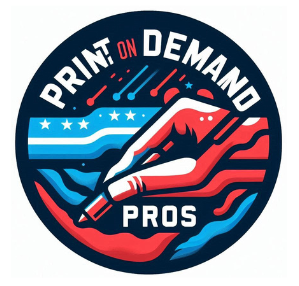Print on Demand, or POD, is like the secret sauce for budding entrepreneurs and seasoned merchants alike. This business model lets you design and sell custom products without having to worry about the nitty-gritty of inventory management or shipping logistics. Neat, right? You come up with the designs, and once a customer places an order, the product is printed and shipped directly to them from the manufacturer.
How does this all work? Essentially, you’re partnering with a POD provider that takes your designs and prints them on a wide range of products, everything from t-shirts to phone cases. The process kicks off only after a customer places an order, which means you avoid the upfront investment in stock and reduce the risk of unsold inventory. You’re free from the hassle of packing and shipping orders all by yourself, saving tons of time to focus on marketing and creating new designs.
The benefits of leveraging POD shipping solutions are pretty compelling. You can run a sleek, low-cost operation without hefty overheads. No need for a warehouse or an army of employees. Plus, flexibility rules here – you can experiment with new products or designs without a financial leap of faith.
Of course, every rose has its thorns. You might face longer delivery times compared to holding stock yourself, which is a bummer for those last-minute shoppers. And let’s not sugarcoat it – the potential for quality issues cropping up is there since you’re not overseeing the production process hands-on. But with the right POD partner and solid customer service skills, these hurdles are totally manageable.
Choosing the Right POD Platform for Seamless Fulfillment
Picking the right Print on Demand (POD) platform is like choosing a good pair of shoes—comfort, style, and functionality are key. You gotta find one that not only fits your business goals snugly but also enhances your ability to deliver on promises to your customers. The choices are plentiful, but knowing what’s hot in the market can guide you well.
Among the top players, you’ll find platforms like Printful, Printify, and TeeSpring. Each one comes with its own set of features, pricing models, and product range. Printful is known for its quality and reliability, Printify offers a broader choice of print providers, and TeeSpring provides a marketplace that can boost sales if you don’t have a store. Your job is to compare what they offer and see who tops the chart for your needs.
When choosing, list out the critical factors: pricing, shipping times, quality assurance, and the range of customizable products. Some platforms provide global shipping at a fantastic rate but might compromise on printing speed or customer service. Others might offer great quality but lack in terms of product variety or carry heftier price tags.
Dive into customer reviews and ratings for real-world feedback. This isn’t just about opinions—real experiences can give insights into pros and cons that the providers might not advertise. Take note of recurring themes, like consistent quality or frequent delays.
Making sure your chosen POD platform integrates well with your online store is essential. Platforms offering plug-and-play integrations for popular sites like Shopify, WooCommerce, or Etsy simplify your workflow, keeping things nice and smooth. No one wants to wrestle with manual order entries or syncing nightmares.
Strategies for Optimizing Shipping in Print on Demand
Optimizing shipping in the Print on Demand world can feel like putting together a puzzle with way too many pieces. But once it’s done, everything fits perfectly, and the benefits are incredible. A big game changer is automation—automating those shipping processes can save you heaps of time and reduce errors. Think about integrating software solutions that handle everything from order printing to label generation. It’s like having a virtual assistant that never sleeps.
Choosing the right shipping carrier is essential for striking that sweet balance between cost and delivery speed. Dive into the options—FedEx, UPS, DHL, and more—to weigh the pros and cons around shipping rates, service reliability, and international coverage. It’s worth investing some time to compare these elements, as they directly influence your business’s reputation and your customers’ happiness.
Speaking of costs, let’s talk money. Shipping can gobble up profits if not managed wisely. Consider using weight-based shipping, flat rates, or even offering free shipping to increase conversion rates while keeping track of your margins. When done right, it can be a nugget of savings right there in your pocket.
Returns and exchanges are inevitable, but how you handle them can make or break your customer relationships. Develop a clear and hassle-free returns policy—even the best products might not meet expectations sometimes. Make it easy for customers to return or exchange items, and they’re likely to come back for more business.
Ensuring a Positive Customer Experience in POD Fulfillment
Customer communication should sit at the heart of your POD strategy. Keeping buyers informed about their order’s status through automated email notifications can soothe any nervousness about online shopping. Whether it’s a confirmation email or a shipment update, timely communication can make all the difference.
Packaging isn’t just about protecting the contents; it’s a golden opportunity to reinforce your brand’s vibe. Consider adding a personal touch like branded boxes or custom thank-you notes. Even those on a tight budget can include a fun sticker or a coupon for the next purchase to give customers that memorable unboxing experience.
Personalization in POD doesn’t stop at the product itself. Offering customized messages or special wrapping options can enchant customers, making them feel they’re getting something truly unique. When people feel special, they tend to stick around.
Shipping snags can pop up, but how you manage them is crucial. Proactive customer support means reaching out to customers even before they’ve noticed a delay, offering solutions or compensations. It’s about being one step ahead and showing that you genuinely care about their experience.
Navigating the Legal and Ethical Aspects of POD Shipping
Dealing with international shipping regulations might sound like a headache, but staying compliant is crucial. Different countries have varying rules, from import duties to product restrictions. Partnering with a knowledgeable shipping provider who can guide you through these regulations can save you from legal hiccups.
Intellectual property matters in POD are serious business. Be sure that the designs you’re printing don’t infringe on any existing copyrights or trademarks. Use original artwork or ensure you have the necessary licenses. This not only avoids potential lawsuits but can also build your brand’s credibility in the long run.
It’s becoming more important to consider the ethical sourcing of your products. Customers are increasingly aware of and concerned about the environmental impact and ethical practices of the brands they support. Choose POD partners that focus on sustainable materials and practices. It could give your brand a stronger, more positive image.
Protecting customer data and maintaining privacy is non-negotiable. Ensure your systems are secure and compliant with data protection laws like GDPR. Respecting privacy fosters trust, and trust is the foundation of a loyal customer base.



I’m particularly interested in the strategies for managing international shipping challenges. From your experience, what are some effective ways to minimize shipping delays and costs? I’ve found that partnering with reliable logistics companies and using automated tracking systems can significantly improve efficiency. Additionally, how do you handle customer expectations regarding delivery times, especially during peak seasons? It’s always a balancing act to ensure timely deliveries while keeping costs in check. What are your thoughts on the best practices for optimizing shipping processes in this industry?